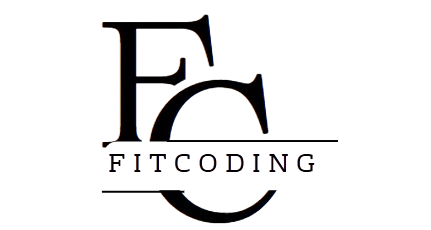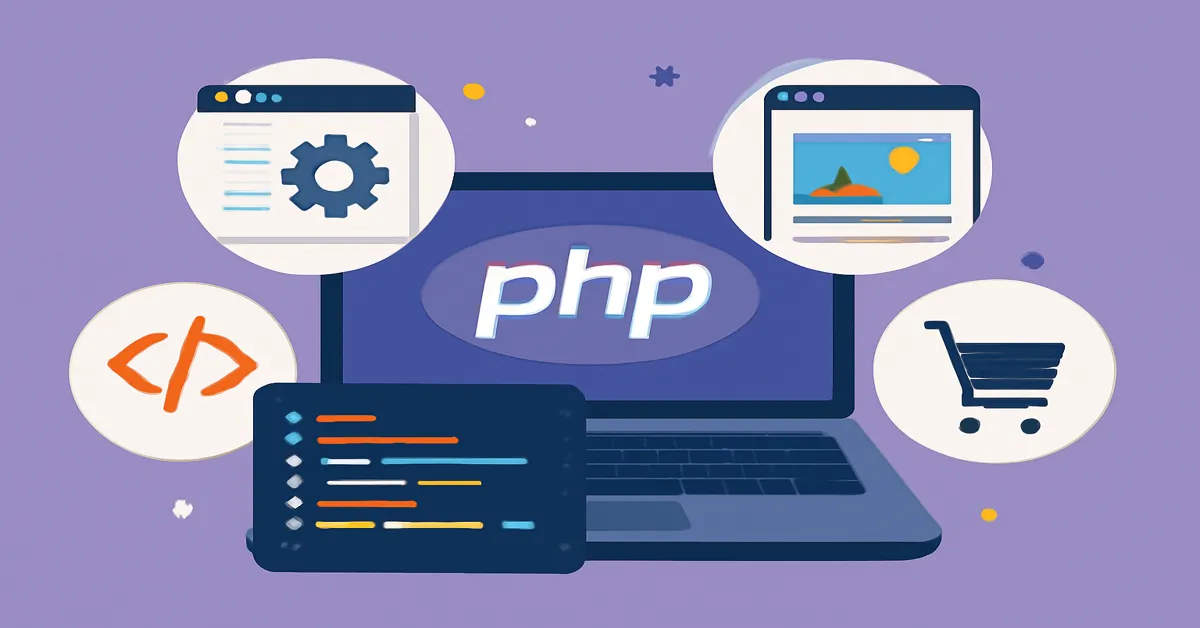In the world of web development, few programming languages have had as lasting an impact as PHP (Hypertext Preprocessor). Since its creation in 1993 by Rasmus Lerdorf, PHP has evolved from a basic set of tools for creating dynamic web pages to a full-fledged, powerful programming language that powers a large portion of the web today. As of now, PHP remains a key player in the development of both small websites and large-scale, enterprise-level applications – Uses of PHP.
What makes PHP unique, aside from its widespread adoption, is its versatility. PHP is used for a wide range of applications, from content management systems (CMS) and e-commerce platforms to RESTful APIs and web services. Understanding the various ways in which PHP can be utilized is essential for anyone learning or considering PHP for their projects – Uses of PHP.
This article explores the key uses of PHP programming and provides a comprehensive look at its role in web development, highlighting why it has remained a fundamental tool in the tech industry for over two decades.
Section 1: PHP in Web Development
1.1 The Foundation of Dynamic Web Pages
At its core, PHP is designed to handle dynamic web page generation. It is a server-side scripting language, meaning that PHP runs on a web server and processes requests, often interacting with databases, before generating the content sent to the client’s browser.
PHP and Dynamic Content Generation
Unlike static HTML pages that are pre-built and serve the same content to every user, PHP-generated pages can vary their content depending on several factors, such as user input or database queries. For example, when a user logs into a website, PHP can display personalized content based on the user’s stored information, such as their profile picture, username, and preferences.
Some common applications of dynamic content generation in PHP include:
- User registration: Allowing users to sign up for accounts and log in to personalized pages.
- Blogs: Dynamically generating posts and allowing users to interact with them by commenting or liking.
- Content management systems (CMS): Allowing website administrators to easily manage content, update posts, and add pages.
This dynamic nature is one of the key reasons why PHP is a go-to language for developers building interactive websites that engage users in real-time.
1.2 PHP in Content Management Systems (CMS)
One of the most significant uses of PHP is in the development of Content Management Systems (CMS). A CMS allows website administrators to manage the content of their websites easily without needing advanced technical skills. WordPress, Joomla, and Drupal are some of the most popular CMS platforms that rely heavily on PHP.
WordPress: The Leading CMS Powered by PHP
WordPress, in particular, is an excellent example of PHP’s power in creating flexible and customizable websites. Over 40% of websites on the internet today run on WordPress, and the majority of its functionality is powered by PHP. From creating blog posts to managing media libraries, PHP processes user inputs, interacts with the database, and dynamically generates the content for each visitor.
Because of its open-source nature, WordPress has been embraced by developers worldwide, allowing for significant flexibility in how PHP is used. Plugins and themes extend the functionality of WordPress websites, and they rely on PHP to integrate seamlessly into the system.
1.3 PHP and E-commerce Platforms
Another prominent use of PHP is in the creation of e-commerce platforms. With its ability to handle dynamic content and interact with databases, PHP is an ideal choice for developing e-commerce websites. Platforms such as Magento, PrestaShop, and WooCommerce (built on top of WordPress) are all powered by PHP.
Building Online Stores with PHP
PHP plays a critical role in enabling e-commerce functionality such as:
- Product catalog management: Displaying products dynamically, categorizing them, and showing product details.
- Shopping cart functionality: Allowing users to add, remove, and view items in their cart.
- Payment gateway integration: PHP integrates securely with payment gateways to process transactions.
- Order tracking: Keeping track of order statuses, providing real-time updates to customers.
E-commerce sites require fast, reliable, and secure transaction handling, and PHP’s flexibility and integration capabilities make it an ideal tool for developers building these systems.
Section 2: PHP and Web Services
2.1 RESTful APIs
As the web moves toward a more interconnected and data-driven environment, APIs (Application Programming Interfaces) have become essential. PHP’s role in developing RESTful APIs has been significant in enabling communication between different web applications and services.
What are RESTful APIs?
A RESTful API is an architectural style for designing networked applications. It uses HTTP requests to access and manipulate data, usually in JSON or XML format. PHP can easily be used to create APIs that serve as the bridge between the front-end and back-end of an application, or even between entirely separate applications.
PHP frameworks like Laravel, Slim, and Lumen provide developers with built-in tools for creating clean, maintainable RESTful APIs. They allow developers to handle routing, authentication, and data formatting with minimal effort.
2.2 PHP and JSON Handling
One of PHP’s major strengths when developing APIs is its native support for JSON (JavaScript Object Notation). JSON is commonly used to transmit data between a server and a client in web applications, and PHP has powerful built-in functions for encoding and decoding JSON data.
For example:
phpCopy<?php
// Creating a simple array
$data = array("name" => "John", "age" => 25);
// Encoding the array to JSON
$json_data = json_encode($data);
// Outputting the JSON data
echo $json_data; // {"name":"John","age":25}
?>
This makes PHP an excellent choice for creating web services that communicate with other systems, including mobile applications or third-party services.
Section 3: PHP for Backend Development
3.1 Database Interaction
One of the most powerful uses of PHP is its ability to interact with databases. In fact, PHP and MySQL have become one of the most widely used combinations in the world of web development, thanks to their ability to store, manage, and retrieve dynamic content efficiently.
Connecting to MySQL with PHP
PHP provides several ways to interact with databases, the most common of which is through the MySQLi extension or PDO (PHP Data Objects). These libraries provide robust, secure methods for connecting to a database, executing queries, and handling results.
For example:
phpCopy<?php
$conn = new mysqli("localhost", "root", "", "my_database");
if ($conn->connect_error) {
die("Connection failed: " . $conn->connect_error);
}
$sql = "SELECT * FROM users";
$result = $conn->query($sql);
while ($row = $result->fetch_assoc()) {
echo "Name: " . $row['name'] . "<br>";
}
$conn->close();
?>
PHP’s MySQL support makes it an excellent choice for building data-driven applications where persistent storage and retrieval are required.
3.2 Session Management
PHP also excels in handling sessions. A session is a way to preserve user data across multiple pages of a website. When a user logs into a website, for example, PHP can create a session that stores user-specific information, such as authentication status or shopping cart contents, across different pages.
PHP provides an easy-to-use session handling mechanism:
phpCopy<?php
session_start();
$_SESSION["username"] = "JohnDoe";
echo "Session variable is set to " . $_SESSION["username"];
?>
Sessions are an essential part of user experience in web applications, allowing for personalized features such as user authentication, personalization, and shopping carts.
Section 4: PHP in Frameworks and Libraries
4.1 Popular PHP Frameworks
Frameworks are a major reason why PHP is so widely used. Frameworks like Laravel, Symfony, and CodeIgniter provide developers with pre-built modules, libraries, and functionality that allow them to build applications more efficiently and securely.
Laravel
Laravel is one of the most popular and modern PHP frameworks. It provides a clean and elegant syntax, making it a favorite for both beginners and advanced developers. Laravel’s features include:
- Routing: Allows you to define clean and expressive URLs for your application.
- Eloquent ORM: A powerful database abstraction layer that makes database interactions simpler and more intuitive.
- Blade Templating: Laravel’s templating engine that allows developers to easily build dynamic HTML.
By leveraging Laravel, developers can quickly build robust applications that are maintainable and scalable.
4.2 PHP Libraries and Tools
Beyond frameworks, PHP also has an extensive set of libraries and tools that developers can use to build applications more effectively. Libraries like PHPMailer (for email handling), Guzzle (for HTTP requests), and Twig (for templating) are widely used across PHP projects to simplify development tasks.
Section 5: PHP’s Role in Modern Web Development
5.1 PHP and Modern Web Trends
Despite the rise of JavaScript-based frameworks and other backend languages like Python and Node.js, PHP continues to be a critical part of web development. As businesses and developers focus on performance, scalability, and security, PHP remains relevant due to its continuous evolution.
5.2 PHP’s Community and Ecosystem
PHP benefits from a massive global community of developers and contributors who continue to improve its features and security. The ecosystem surrounding PHP, including its vast array of open-source libraries, frameworks, and tools, ensures that developers have everything they need to build modern web applications.
Conclusion
From powering content management systems and e-commerce platforms to creating dynamic web pages and web services, PHP continues to be a fundamental tool for web development. Its versatility, ease of use, and powerful community support make it an indispensable language for building both simple and complex applications.
Whether you are a novice learning the language or an experienced developer building enterprise-level solutions, PHP remains an essential part of the web development toolkit. With continuous improvements and an expanding ecosystem, PHP is likely to remain a cornerstone of the web for years to come.
As the web continues to evolve, PHP’s role in shaping the future of dynamic, data-driven websites remains as relevant as ever – Uses of PHP.
Read:
The History of PHP: From Humble Beginnings to Web Development Dominance
Step 1 to Learn PHP Programming: A Comprehensive Guide for Beginners
FAQs
1. What are the main uses of PHP in web development?
Answer: PHP is primarily used for server-side scripting to create dynamic web pages. It powers content management systems (CMS) like WordPress, e-commerce platforms, user authentication systems, and APIs. It’s also used for interacting with databases like MySQL to store and retrieve data for websites.
2. Is PHP still relevant in modern web development?
Answer: Yes, PHP remains highly relevant. It powers over 40% of websites globally, including popular platforms like WordPress. Its simplicity, large ecosystem, and continuous updates (like PHP 8 with JIT) make it a reliable choice for dynamic websites, content management, and e-commerce systems.
3. How does PHP work with databases?
Answer: PHP interacts with databases through libraries like MySQLi or PDO (PHP Data Objects). PHP can send SQL queries to databases, retrieve the data, and display it dynamically on websites. This is essential for user authentication, storing blog posts, and any site requiring data storage.
4. Can PHP be used to build RESTful APIs?
Answer: Yes, PHP is widely used to build RESTful APIs. Frameworks like Laravel and Slim provide tools to create APIs efficiently. PHP’s support for JSON and its ability to handle HTTP requests make it an excellent choice for developing APIs that allow applications to communicate over the web.
5. What are some PHP frameworks used in modern development?
Answer: Popular PHP frameworks include Laravel, Symfony, CodeIgniter, and Zend Framework. These frameworks help developers build robust, secure, and scalable applications quickly by offering reusable components, routing, authentication, and database management tools.











